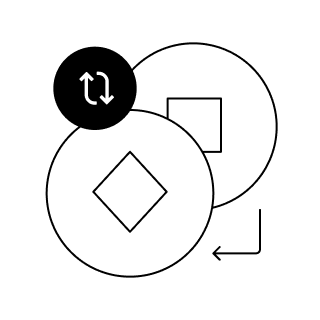What’s Siacoin (SC)? How can I buy it?
What is Siacoin?
Siacoin (SC) is the native cryptocurrency of the Sia network, an open-source, decentralized cloud storage platform launched in 2015 by Nebulous (now Skynet Labs/Siabase Labs lineage). Sia’s core proposition is simple: instead of renting storage from centralized providers like Amazon S3, users can rent encrypted, distributed storage from a global marketplace of independent hosts. Siacoin functions as the medium of exchange within this marketplace—renters pay hosts in SC for storage and bandwidth, while hosts lock collateral in SC to guarantee reliability.
Sia aims to offer:
- Lower costs than traditional cloud storage by leveraging unused hard drive space worldwide.
- Strong privacy and security using end-to-end encryption and file sharding.
- High durability through erasure coding and redundant distribution across many hosts.
- A permissionless, censorship-resistant storage economy powered by a public blockchain.
The Sia ecosystem also includes Sia-UI and Sia Daemon for users and developers, Sia Central and community explorers, and third-party integrations for backups and developer tooling.
How does Siacoin work? The tech that powers it
Sia combines a purpose-built blockchain, cryptographic contracts, and distributed storage protocols to create a trust-minimized storage market.
-
Storage market and payment rails:
- Renters and hosts discover each other and negotiate prices in an open market. Prices typically include storage per TB per month and bandwidth rates.
- Payments are made in Siacoin via off-chain payment channels called payment contracts, reducing on-chain fees while maintaining security.
-
File contracts (smart contracts on Sia):
- A file contract is a time-locked agreement recorded on the Sia blockchain specifying storage terms: price, duration, redundancy requirements, and penalties.
- Renters pre-fund the contract with SC, and hosts lock collateral. Misbehavior can lead to loss of collateral; honest service earns hosts payouts.
- Contracts are finalized via a cryptographic proof-of-storage process.
-
Merkle proofs and storage verification:
- Files are split into segments and erasure-coded (e.g., Reed-Solomon) to create redundancy. Segments are encrypted client-side and distributed to many hosts.
- At verification intervals, hosts must submit Merkle proofs for randomly challenged data segments to claim payment. Failure to provide correct proofs leads to penalties or loss of revenue for the host.
- This challenge-response design ensures hosts actually store the data without the network ever seeing plaintext content.
-
Redundancy and durability:
- Erasure coding enables reconstructing files even if several hosts go offline. Renters commonly target 3x redundancy or higher, depending on risk tolerance and cost.
- The renter software autonomously repairs redundancy by re-uploading segments if host availability degrades.
-
Consensus and mining:
- The Sia blockchain uses proof-of-work (PoW) for consensus and to issue new SC as block rewards. Historically, Sia used Blake2b hashing and implemented an ASIC-friendly approach, including a controversial hard fork in 2018 to favor in-ecosystem ASICs (Obelisk) over third-party devices.
- Block rewards incentivize miners to secure the network, while transaction fees and contract formations are recorded on-chain.
-
Siafunds model:
- Alongside Siacoin, Sia introduced Siafunds, a separate asset that entitles holders to a small percentage of the proceeds from storage contracts. This mechanism has historically supported development funding without taxing SC directly.
-
Client-side encryption and privacy:
- All encryption occurs on the renter’s device. Hosts store only encrypted shards; they cannot read user data.
- Because data is sharded and distributed globally, Sia avoids single points of failure and improves data survivability.
-
Developer and user tooling:
- Sia-UI offers a graphical interface to rent storage, manage files, monitor contracts, and handle wallets.
- The Sia Daemon exposes an HTTP API for automation and integrations, making it straightforward to build apps that store data on Sia.
What makes Siacoin unique?
- Storage-first design: Unlike general-purpose smart contract platforms, Sia’s blockchain and protocol are specialized for storage economics and verification, focusing engineering effort on durability, privacy, and cost optimization.
- Enforced collateralization: Hosts stake collateral in contracts, aligning incentives and providing stronger reliability guarantees than simple “best-effort” marketplaces.
- Efficient proofs-of-storage: Merkle proof challenges ensure hosts actually store data while minimizing bandwidth and on-chain overhead. This approach scales verification without compromising privacy.
- User-controlled encryption and redundancy: Clients decide redundancy levels, repair policies, and encryption—granting fine-grained control and avoiding vendor lock-in.
- Transparent, global pricing: Market-driven pricing enables potentially lower costs than centralized providers, especially for cold or bulk storage use cases.
- Long-running, production network: Launched in 2015, Sia is one of the earliest and longest-operating decentralized storage networks, with a mature client and active community.
Siacoin price history and value: A comprehensive overview
Note: This section is informational and not financial advice.
-
Issuance and supply:
- Siacoin has an inflationary model with ongoing PoW block rewards. There is no hard-capped supply; instead, issuance declines proportionally over time as a share of the total supply.
- Inflation supports network security and liquidity but differs from hard-capped assets like Bitcoin.
-
Historical performance:
- SC experienced its first major run-up during the 2017–2018 crypto bull market, reaching multi-cent highs before retracing during the broader bear market.
- Subsequent cycles, including 2020–2021, saw renewed interest alongside DeFi and Web3 narratives, with price volatility common to mid-cap crypto assets.
- As with many infrastructure tokens, market value tends to track network traction, developer progress, and macro crypto cycles rather than end-user revenues alone.
-
Drivers of value:
- Network usage: More storage demand and host participation can increase contractual activity and SC utility.
- Protocol upgrades: Improvements to efficiency, user experience, proofs, and developer tooling can catalyze adoption.
- Competitive landscape: Alternatives like Filecoin, Arweave, Storj, and centralized cloud providers influence market share and pricing dynamics.
- Governance and funding clarity: The Siafunds model and any changes in development stewardship can affect investor confidence.
Because crypto markets are highly volatile, anyone considering SC should review multiple data sources: reputable exchanges, blockchain explorers, on-chain metrics, and official project communications.
Is now a good time to invest in Siacoin?
This is not financial advice. Whether SC is a suitable investment depends on your thesis, risk tolerance, and time horizon. Consider the following:
-
Thesis and adoption risk:
- Bull case: Decentralized storage grows as data sovereignty, censorship resistance, and cost-efficiency gain importance. Sia’s mature stack and storage-specific design carve out a durable niche.
- Bear case: Centralized clouds cut prices and add privacy features; alternative decentralized networks capture mindshare; or on-chain storage demand remains niche relative to broader crypto use cases.
-
Technology and execution:
- Assess the development cadence, roadmap, protocol security, and reliability of the renter-host marketplace. Look for improvements in onboarding, redundancy management, and cost predictability.
-
Token economics:
- Understand SC’s inflationary model, miner incentives, and how storage demand translates into token velocity and potential price pressure.
- Review liquidity, exchange support, custody options, and regulatory considerations in your jurisdiction.
-
Diversification and strategy:
- Treat SC as a high-volatility, sector-specific asset. Position sizing, dollar-cost averaging, and adherence to a risk-management plan can help manage drawdowns.
Before making decisions, consult:
- The official Sia docs and blog for protocol updates and security notes.
- Reputable analytics and explorers for on-chain activity and contract formation trends.
- Independent security reviews and community forums for host reliability and user experiences.
Final thought: Sia is a technically rigorous, long-standing project in decentralized storage. If your investment thesis centers on the growth of user-controlled, censorship-resistant data infrastructure, Siacoin merits consideration—provided you balance the opportunity against sector and execution risks.
Discover the different ways to buy crypto in the UAE
Create an OKX account
Get verified
Start a trade
Enter an amount
Choose your payment method
Confirm your order
All done
Create an OKX account
Get verified
Start a trade
If Siacoin isn’t available in the dropdown, purchase any of the available tokens and convert it to SC.
Place a buy order
Complete your purchase
Receive your SC
All done
Get the OKX app or Wallet extension
Set up your wallet
Fund your wallet
Find your next purchase
Note:
Tokens with the same symbol can exist on multiple networks or may be forged. Always double-check the contract address and blockchain to avoid interacting with the wrong tokens.
Trade your crypto on OKX DEX
Choose the token you’re paying with (e.g., USDT, ETH, or BNB), enter your desired trading amount, and adjust slippage if needed. Then, confirm and authorize the transaction in your OKX Wallet.
Limit order (optional):
If you’d prefer to set a specific price for your crypto, you can place a limit order in Swap mode.
Enter the limit price and trading amount, then place your order.
Receive your crypto
All done

Make informed decisions















